Like many travellers, we started with the famous pyramids of Giza, and they were every bit as awe-inspiring as we imagined. But it wasn’t until we visited the older pyramids at Saqqara and Dashur that we truly began to understand the evolution and ambition behind these ancient structures.
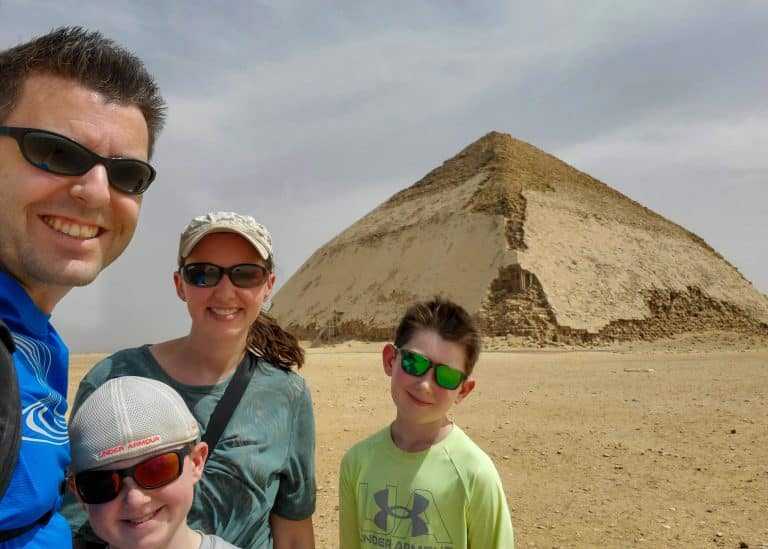
In hindsight, we realized that starting with the earlier pyramids would have made our experience at Giza even more impactful. Visiting the sites in chronological order will give you a deeper appreciation of how ancient Egyptian architecture evolved from the ground up, and make standing before the Great Pyramid all the more powerful.
Here’s why we recommend starting south of Cairo, plus some practical tips for exploring the pyramids.
Understanding the Evolution of the Pyramids
The pyramids didn’t appear fully formed at Giza. The massive, smooth-sided structures we associate with ancient Egypt were the result of decades of experimentation, innovation, and even trial and error.
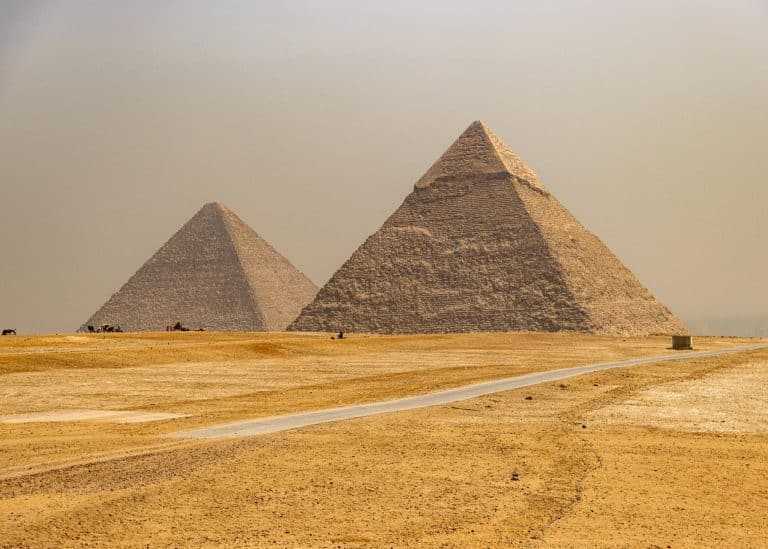
Saqqara: Where It All Began
Saqqara, the necropolis of ancient Memphis and home to the Step Pyramid of Djoser, offered a fascinating look at the origins of pyramid construction in Egypt. Built over 4,700 years ago, it’s the oldest stone pyramid in Egypt and the earliest large-scale cut-stone construction in history. Designed in several phases for King Djoser, the Step Pyramid stands out with its distinctive layered appearance—more like a tiered cake than the smooth-sided pyramids that came later.

Beyond the famous Step Pyramid, Saqqara revealed even more treasures. We explored the pyramid of Teti, which looks unassuming from the outside but opens into a maze of chambers and passageways with intricately carved walls inside. Even more striking were the nearby tombs of Mereruka and Ptahhotep II—lavishly decorated with hieroglyphs, animal scenes, and intricate depictions of daily life. Though some of the original colour has faded over time, the precision and storytelling etched into the stone remain powerful. Walking through these tombs offered a surprisingly intimate glimpse into ancient Egyptian life and culture.
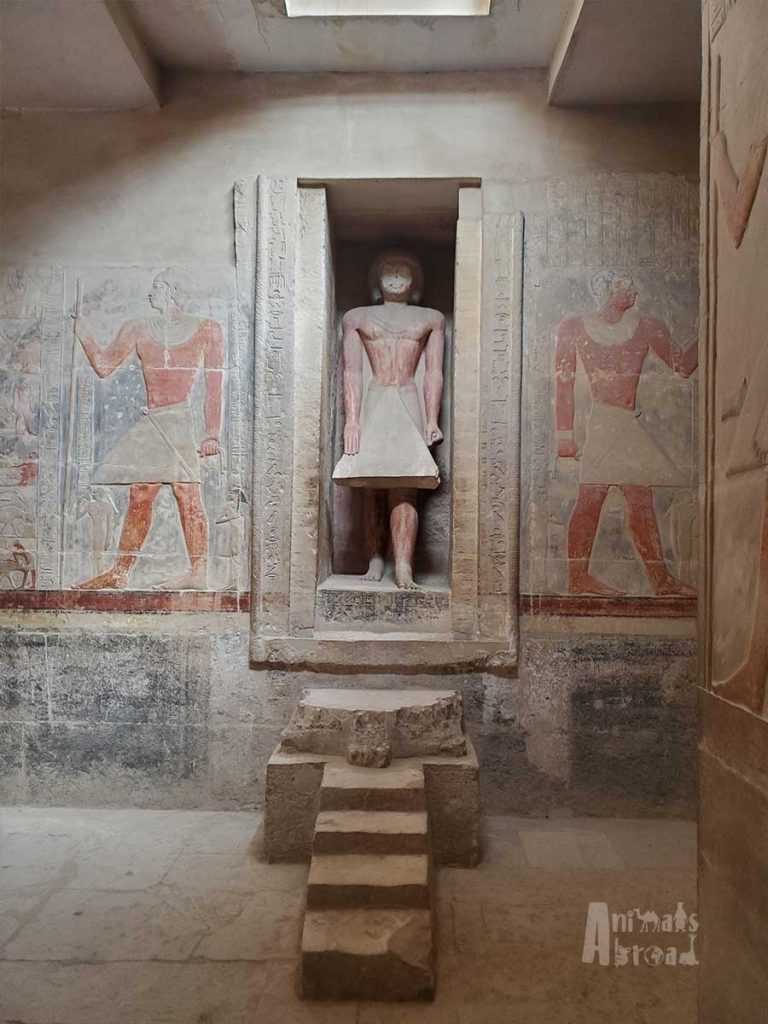
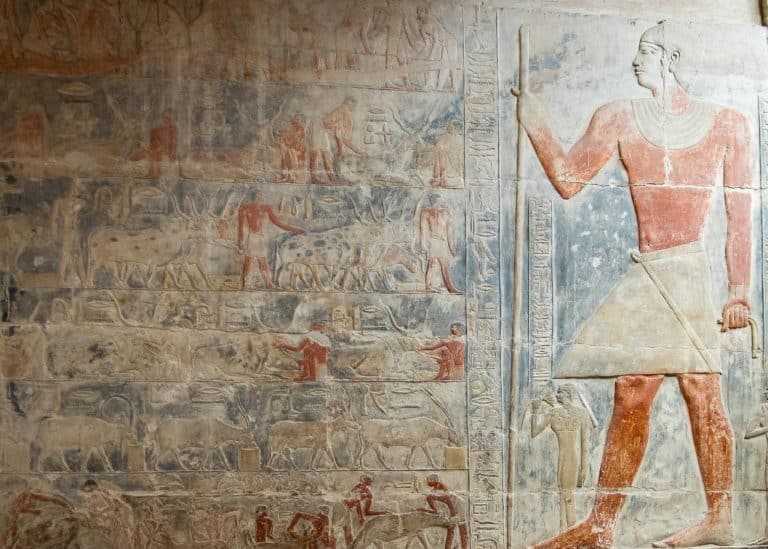
While the tombs at Saqqara may not match the grandeur of those in the Valley of the Kings, they are historically significant and well worth a visit, especially for families interested in how ancient Egypt evolved.
Dashur: Experiments in Design
From Saqqara, continued to Dashur, where two of Egypt’s most fascinating pyramids rise in near solitude: the Bent Pyramid and the Red Pyramid.
The Bent Pyramid is striking—the angle of its slope changes partway up, creating a distinctive “bend” in its profile. Scholars believe this adjustment was made mid-construction to prevent collapse, making it an important transitional structure in the evolution of pyramid design.
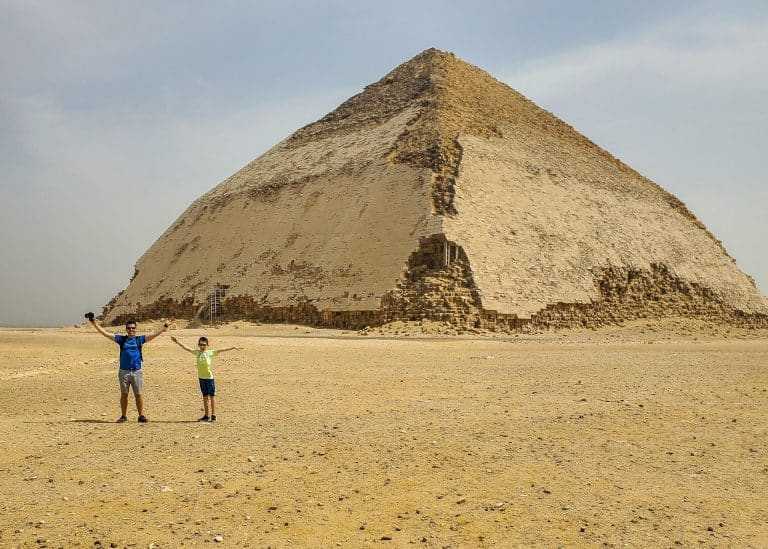
Just across the desert sands stands the Red Pyramid, considered Egypt’s first successful “true” pyramid. With its even angles and smooth lines, it became the model for the Great Pyramids at Giza.

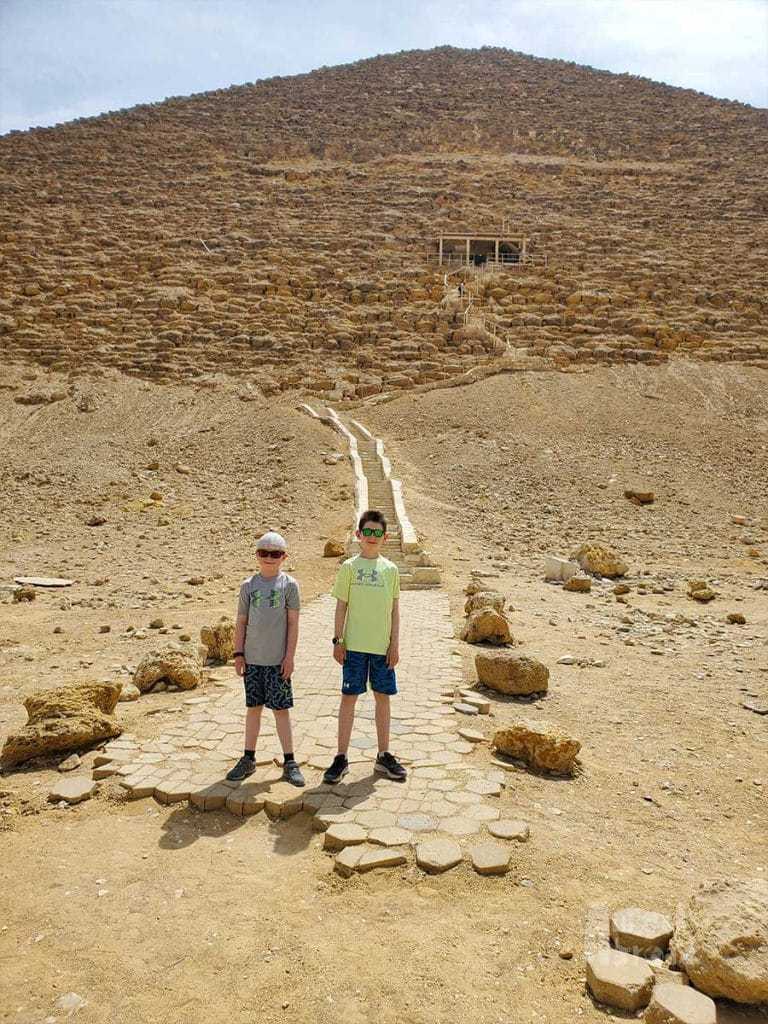
Exploring the interior of the Red Pyramid was an adventure in itself: one part Indiana Jones, one part stairmaster. You enter the pyramid by climbing a narrow wooden staircase up the outside of the structure, which leads to a low entrance tucked into the stone. From there, you descend a steep ramp, crouching through the tight stone corridor into the pyramid’s echoing chamber deep within. Then, we climbed several wooden staircases inside to reach the top, home to a colony of bats clinging to the ceiling. It was surreal to see these creatures nesting in a monument built more than 4,000 years ago.
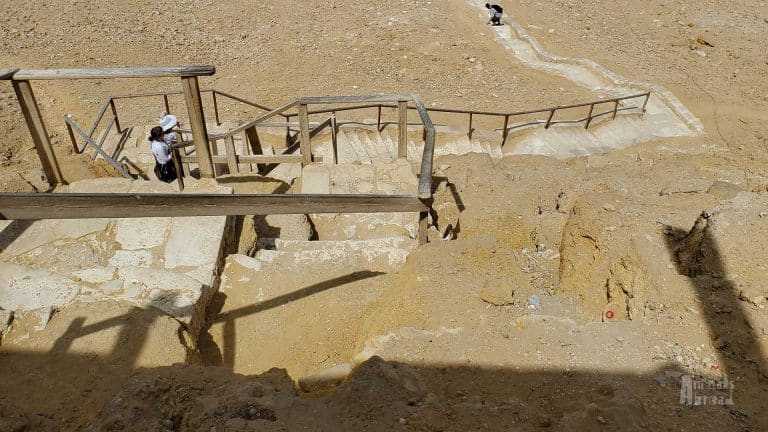
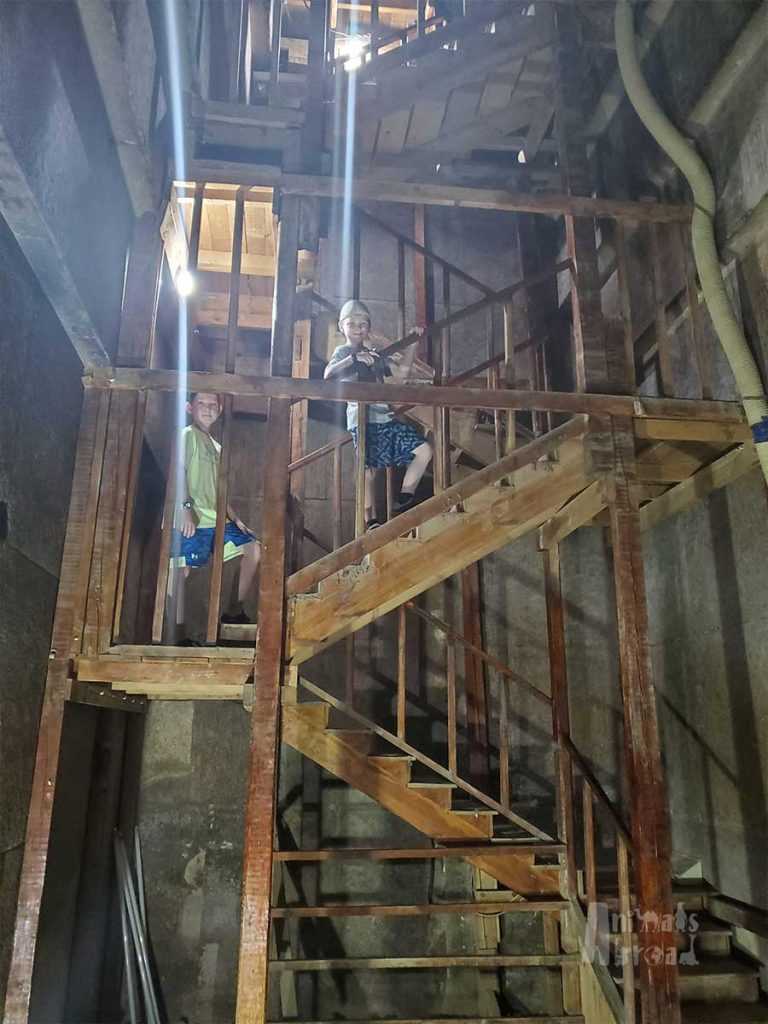
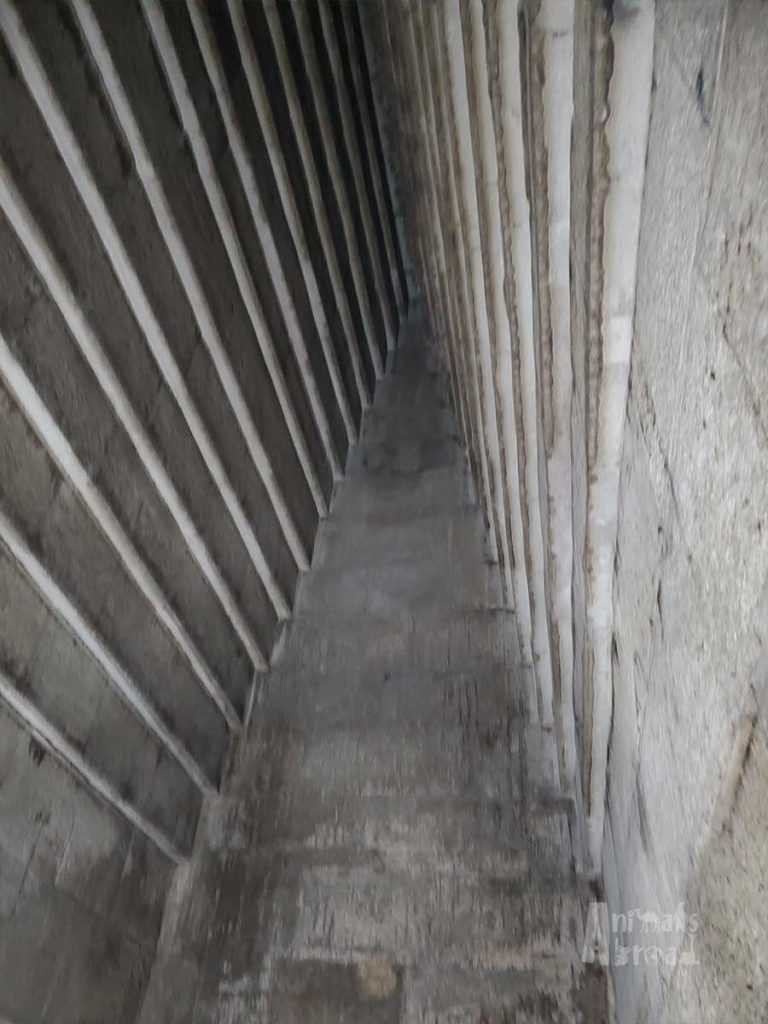
Seeing the progression of these early pyramids firsthand gave us a greater understanding of the skill and determination of ancient Egyptian builders—and made the engineering feats at Giza all the more impressive.
Tip: The interior passages of these pyramids are extremely narrow and steep, requiring visitors to crouch or hunch for long stretches. Combined with the heat and poor ventilation inside, the experience can feel intense, especially for those who are claustrophobic or sensitive to high temperatures. Kids often handle it better than adults thanks to their smaller size—but it’s still wise to take breaks, bring water, and consider whether entering is right for your group.

A Great Day in Giza
Now that you’ve explored the earlier pyramids at Saqqara and Dashur, it’s time for the main event: the iconic Pyramids of Giza. Visiting them after seeing the older structures adds an entirely new layer of appreciation. You begin to see the Great Pyramid not just as an awe-inspiring monument, but as the culmination of decades of architectural experimentation and ambition.
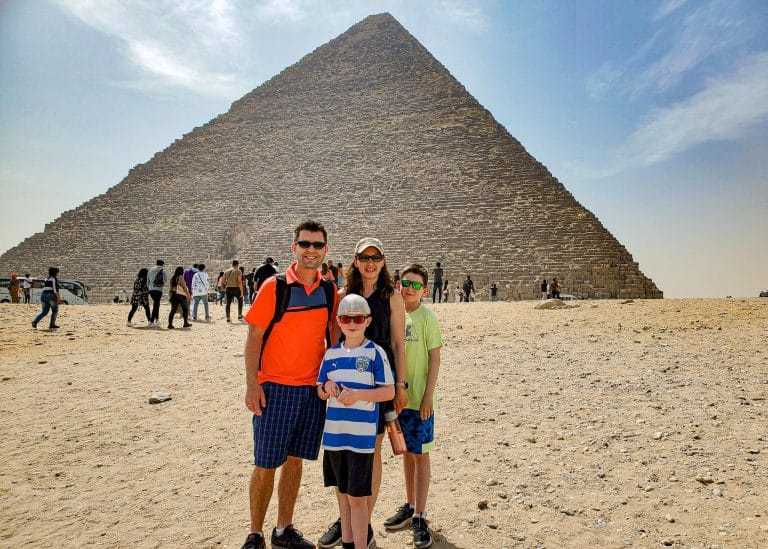
The Great Pyramids
Standing before the Great Pyramid of Khufu—still the tallest pyramid in Egypt—you can clearly see the leap in building techniques. The massive limestone blocks, the precise orientation to the four sides, the sheer scale of it all—it’s hard to grasp until it’s in front of you.
Surprisingly, the sides of the pyramid weren’t smooth. The outer casing stones that once gave it a polished finish have eroded over time, revealing the core, thousands of rough-cut blocks fitted tightly together. Many of these are larger than our boys, and no two are exactly the same. The irregular blocks fit together like a giant, ancient puzzle.
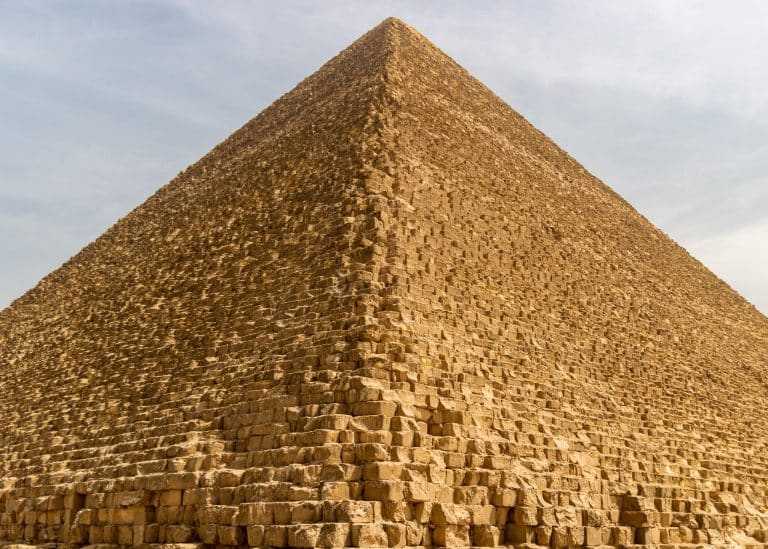

We tried to imagine how the ancient Egyptians could have transported and stacked such enormous stones with nothing but simple tools. We learned that they quarried the limestone nearby and ferried it across the Nile in large wooden boats. During the flood season, the rising waters helped bring the stones even closer to the building site. The more we learned, the more astonishing it became.
We also explored the Pyramid of Khafre, built for Pharaoh Khafre, the son of Khufu. The Pyramid of Khafre is smaller in height and diameter, although it appears larger as it sits on higher ground. It was built with a steeper angle and retains a portion of its original smooth casing, called “the cap” at the top. Our guide recommended entering this pyramid over the Pyramid of Khufu as it is easier to access, has fewer crowds, and is less expensive.

Like the pyramids in Dashur, trekking inside the Pyramid of Khafre was a bit challenging at times, with intense heat and a long, steep wooden ramp down into the belly of the structure. The passageway is narrow and only about two meters high, so we had to crouch as we moved through, careful not to bump our heads on the low stone ceiling. But once we reached the burial chamber, the ceiling opened up, and we could stand tall again. Inside, we explored the simple but striking tomb.

Finally, the Pyramid of Menkaure, though the smallest of the three, differs with its granite casing on the lower areas and boasts decorative walls in the burial chamber.
The Sphinx and the Valley Temple
A short walk from the main pyramids brought us to the Sphinx, impressive and regal, facing east as it has for thousands of years.

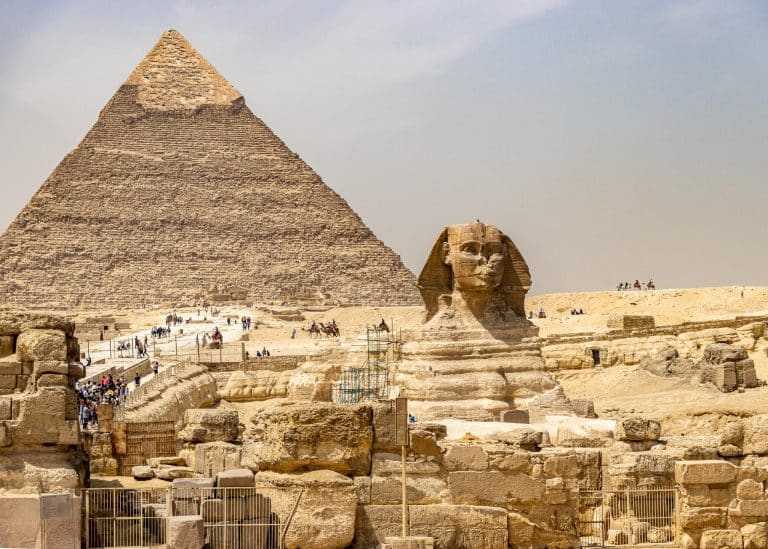

And we couldn’t resist taking some fun pictures with the iconic artifacts.

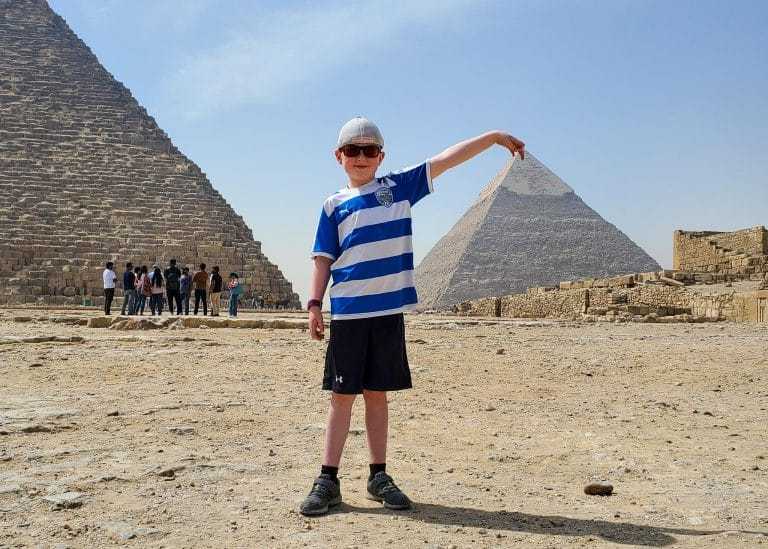
Nearby, the Valley Temple offers a glimpse into the rituals of mummification, burial, and the journey to the next life, and we were glad to have a guide there to explain the purpose and symbolism behind the process. It was fascinating, and the boys sat and listened in awe.
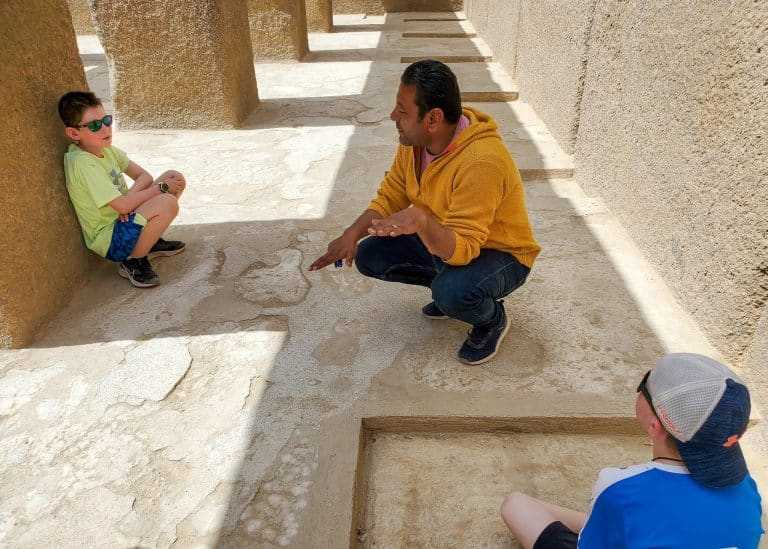
Tips for Visiting the Pyramids with Kids
Here are some practical lessons we learned from our pyramid days:
• Start with Saqqara and Dashur if you can: These sites are quieter and less visited, but incredibly rich in history. Seeing them first helped us understand the full story of pyramid building.
• Hire a guide: We rarely go for guided tours, but we opted for a private guide for all three sites, and we’re so glad we did. The pyramids are awe-inspiring even without explanation, but a good guide can connect the dots between different sites, decode the hieroglyphs, and point out things you’d otherwise miss.
• Arrive early to avoid the heat and crowds, and bring lots of water and sun protection.
• Choose your pyramid entry wisely: Climbing inside a pyramid is a unique experience, but also not for the faint of heart. The Great Pyramid is the most famous, but also the most cramped and expensive. We preferred Khafre’s pyramid—still impressive, but easier to access.
• Expect physical exertion: Entering the pyramids involves steep ramps, narrow passages, poor ventilation, and often a bump on the head. Bring water, take breaks, and be prepared to sweat.
• Prepare for contrasts: From certain angles, the complex appears to rise from the untouched desert. From others, you can see a Pizza Hut just across the busy city street. It was surprising, and a bit disappointing, but it’s part of the reality of visiting one of the world’s most famous landmarks in a growing city.
• Timing: Prepare for chaotic traffic—build in extra time between sites. Give yourselves approximately an hour to explore Dasjur, 2 hours for Saqqara, and 3 to 4 hours for the Great Pyramids (depending on the number you wish to enter). *Disclaimer: We visited just after COVID, when crowds were low. Visiting times may need to be extended.
• Money: Bring Egyptian pounds with you for tips and entrance fees. Saqqara and Dashur only accepted cash (the credit machine was not working). Be sure to take money out ahead of time. While bank machines are widely available in Cairo, they can be unreliable. Often, machines run out of cash, or credit cards are rejected. It is common to try several machines—sometimes half a dozen or more—before finding one that works.

So, Were the Great Pyramids as Great as Expected?
Absolutely! They were absolutely spectacular, and even more so after understanding the story and evolution behind them. Visiting the pyramids was one of the most memorable experiences of our travels. What we expected to be a single “bucket list” moment became a much deeper journey through ancient history.
If you’re headed to Cairo, we highly recommend taking the longer road to Giza. Start at the beginning. The story of the pyramids is so much bigger than the postcards—and even more awe-inspiring in person.

Ready to Explore Egypt?
Check out these related posts to help plan your trip:
• 3 Days in Cairo with Kids
• Karnak Temple in Luxor: Tips for visiting with Kids
• Exploring Egypt’s White Desert and Whale Valley
• Exploring Kom Ombo, Edfu & Khnum Temples: A Family Guide
• Visiting Aswan’s Philae Temple with Kids

